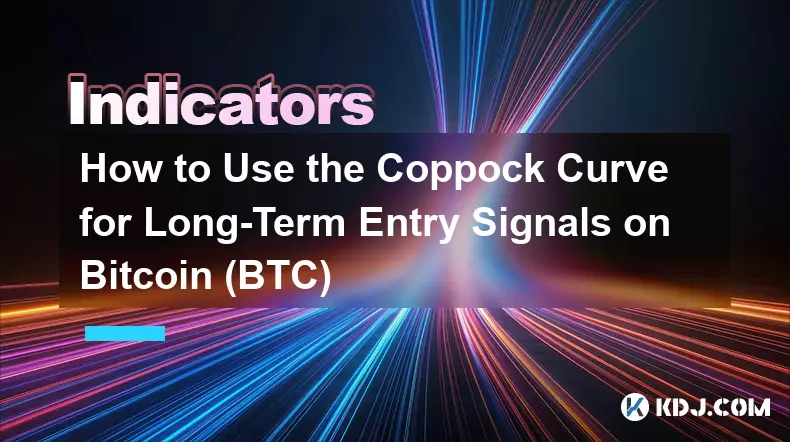-
 bitcoin
bitcoin $107015.826941 USD
-2.18% -
 ethereum
ethereum $3637.352324 USD
-5.18% -
 tether
tether $0.999831 USD
-0.02% -
 xrp
xrp $2.338078 USD
-6.23% -
 bnb
bnb $998.272150 USD
-6.97% -
 solana
solana $167.598257 USD
-10.12% -
 usd-coin
usd-coin $0.999863 USD
0.01% -
 tron
tron $0.282573 USD
-5.09% -
 dogecoin
dogecoin $0.169891 USD
-7.39% -
 cardano
cardano $0.557554 USD
-7.03% -
 hyperliquid
hyperliquid $39.914802 USD
-5.85% -
 chainlink
chainlink $15.414549 USD
-9.97% -
 bitcoin-cash
bitcoin-cash $510.361911 USD
-4.26% -
 ethena-usde
ethena-usde $0.999194 USD
-0.03% -
 stellar
stellar $0.282092 USD
-6.07%
How do you identify M-Tops and W-Bottoms with BOLL?
M-Tops and W-Bottoms with Bollinger Bands help spot crypto trend reversals, confirmed by volume, RSI, and candlestick patterns for higher accuracy. (154 characters)
Oct 13, 2025 at 03:18 pm

Understanding M-Tops and W-Bottoms in the Context of Bollinger Bands
Bollinger Bands are a widely used technical analysis tool that consists of a moving average and two standard deviation bands plotted above and below it. These bands expand and contract based on market volatility, making them particularly useful for identifying potential reversal patterns such as M-Tops and W-Bottoms. Traders in the cryptocurrency market often rely on these formations to anticipate price reversals after strong upward or downward movements.
Identifying M-Tops Using Bollinger Bands
M-Tops signal potential bearish reversals and typically form after an extended uptrend.- The price moves sharply higher and touches or exceeds the upper Bollinger Band, indicating overbought conditions.
- A pullback occurs, bringing the price back toward the middle band or lower portion of the upper band.
- The price rallies again, attempting to reach new highs, but fails to surpass the previous peak and shows weaker momentum.
- During this second peak, the price may fail to reach the upper band, suggesting diminishing buying pressure.
- A decisive break below the neckline—formed by the low point between the two peaks—confirms the M-Top pattern and signals a potential downtrend.
This formation reflects a shift from bullish to bearish sentiment, especially when confirmed by declining volume on the second peak or bearish candlestick patterns like shooting stars or bearish engulfing bars.
Recognizing W-Bottoms with Bollinger Band Analysis
W-Bottoms indicate potential bullish reversals and usually appear after a prolonged downtrend.- The price drops sharply and touches or falls below the lower Bollinger Band, reflecting oversold conditions.
- A rebound follows, pushing the price back toward the middle band, though it may not reach it fully.
- The price declines once more, revisiting the prior low but failing to make a new lower low, showing reduced selling pressure.
- This second bottom often forms closer to the middle band, and the price remains above the lower band, signaling weakening bearish momentum.
- A breakout above the resistance level—established by the high between the two lows—validates the W-Bottom and suggests a possible upward move.
The confirmation of a W-Bottom is strengthened when accompanied by rising trading volume during the breakout or bullish candlestick patterns such as hammer or bullish engulfing formations.
Enhancing Accuracy with Supporting Indicators
While Bollinger Bands provide valuable context for spotting M-Tops and W-Bottoms, combining them with other analytical tools increases reliability.
- RSI (Relative Strength Index) can confirm overbought levels during M-Tops or oversold readings during W-Bottoms, adding confluence to the setup.
- Volume analysis helps assess the strength behind price moves; decreasing volume on the second peak of an M-Top or increasing volume on the breakout of a W-Bottom adds credibility.
- Candlestick patterns appearing near key Bollinger Band levels offer additional clues about market sentiment and potential turning points.
- Trendlines and horizontal support/resistance zones help define the neckline or breakout levels critical for pattern validation.
Traders should also monitor overall market structure and macro-level crypto trends, as isolated patterns within choppy or sideways markets may produce false signals.
Frequently Asked Questions
What does it mean when price touches the upper Bollinger Band?Touching the upper band alone isn’t a sell signal. It indicates elevated prices relative to recent volatility, often occurring during strong trends. In the context of an M-Top, repeated failure to sustain moves beyond the upper band highlights weakening momentum.
Can W-Bottoms form during sideways markets?Yes, W-Bottoms can emerge during consolidation phases. However, their significance increases when they occur after a clear downtrend and are followed by a confirmed breakout above resistance with strong volume.
How important is volume in confirming M-Tops and W-Bottoms?Volume plays a crucial role. Declining volume on the second peak of an M-Top suggests lack of buyer interest. Conversely, rising volume on the breakout of a W-Bottom confirms renewed demand, increasing the likelihood of a successful reversal.
Do Bollinger Bands work well in highly volatile crypto markets?Bollinger Bands adapt to volatility by expanding during turbulent periods and contracting during calm phases. This dynamic nature makes them suitable for crypto trading, though traders should combine them with other tools to filter out noise and avoid premature entries.
Disclaimer:info@kdj.com
The information provided is not trading advice. kdj.com does not assume any responsibility for any investments made based on the information provided in this article. Cryptocurrencies are highly volatile and it is highly recommended that you invest with caution after thorough research!
If you believe that the content used on this website infringes your copyright, please contact us immediately (info@kdj.com) and we will delete it promptly.
- Sequans, Bitcoin, and Debt Reduction: A NYC Perspective on a Bold Move
- 2025-11-05 03:50:12
- XRP Price Wobbles: Death Cross Looms as Ripple Token Navigates Choppy Waters
- 2025-11-05 04:10:01
- Altcoins, Perpetual Tokens, and ETH Price: Navigating the Crypto Current
- 2025-11-05 03:55:01
- Tether's Triumph: $10 Billion Profits and a Treasury Milestone
- 2025-11-05 03:55:12
- Crypto Coins with Growth Potential: Unearthing 2025's Hidden Gems
- 2025-11-05 04:00:01
- MoonBull, Crypto Presales, and Solana WLFI: Riding the Wave to Big Gains
- 2025-11-05 03:25:02
Related knowledge

Using TradingView for crypto: essential tips and tools for chart analysis.
Nov 05,2025 at 04:30am
Mastering Chart Types on TradingView1. Selecting the right chart type is crucial for accurate crypto analysis. The default candlestick chart remains a...

Technical analysis for crypto: using RSI and MACD to find trading signals.
Nov 03,2025 at 03:18pm
Decentralized Exchanges Are Reshaping Trading Dynamics1. Decentralized exchanges (DEXs) have gained significant traction by eliminating intermediaries...

Reading crypto charts for beginners: understanding candlestick patterns.
Nov 05,2025 at 02:55am
Introduction to Candlestick Charts in Crypto Trading1. Candlestick charts are one of the most widely used tools in cryptocurrency trading, offering vi...

The Best Exponential Moving Average (EMA) Settings for Crypto Swing Trading
Oct 25,2025 at 04:55pm
The Best Exponential Moving Average (EMA) Settings for Crypto Swing TradingSwing trading in the cryptocurrency market relies heavily on identifying tr...

How to Use the Coppock Curve for Long-Term Entry Signals on Bitcoin (BTC)
Oct 31,2025 at 03:01pm
Understanding the Coppock Curve in Bitcoin Analysis1. The Coppock Curve is a momentum indicator originally designed for stock market indices but has f...

A Beginner's Guide to Finding Divergence with the MACD on the Solana (SOL) Chart
Oct 26,2025 at 12:36pm
Understanding MACD and Its Role in Solana Trading1. The Moving Average Convergence Divergence (MACD) is a momentum indicator widely used in cryptocurr...

Using TradingView for crypto: essential tips and tools for chart analysis.
Nov 05,2025 at 04:30am
Mastering Chart Types on TradingView1. Selecting the right chart type is crucial for accurate crypto analysis. The default candlestick chart remains a...

Technical analysis for crypto: using RSI and MACD to find trading signals.
Nov 03,2025 at 03:18pm
Decentralized Exchanges Are Reshaping Trading Dynamics1. Decentralized exchanges (DEXs) have gained significant traction by eliminating intermediaries...

Reading crypto charts for beginners: understanding candlestick patterns.
Nov 05,2025 at 02:55am
Introduction to Candlestick Charts in Crypto Trading1. Candlestick charts are one of the most widely used tools in cryptocurrency trading, offering vi...

The Best Exponential Moving Average (EMA) Settings for Crypto Swing Trading
Oct 25,2025 at 04:55pm
The Best Exponential Moving Average (EMA) Settings for Crypto Swing TradingSwing trading in the cryptocurrency market relies heavily on identifying tr...

How to Use the Coppock Curve for Long-Term Entry Signals on Bitcoin (BTC)
Oct 31,2025 at 03:01pm
Understanding the Coppock Curve in Bitcoin Analysis1. The Coppock Curve is a momentum indicator originally designed for stock market indices but has f...

A Beginner's Guide to Finding Divergence with the MACD on the Solana (SOL) Chart
Oct 26,2025 at 12:36pm
Understanding MACD and Its Role in Solana Trading1. The Moving Average Convergence Divergence (MACD) is a momentum indicator widely used in cryptocurr...
See all articles










































































